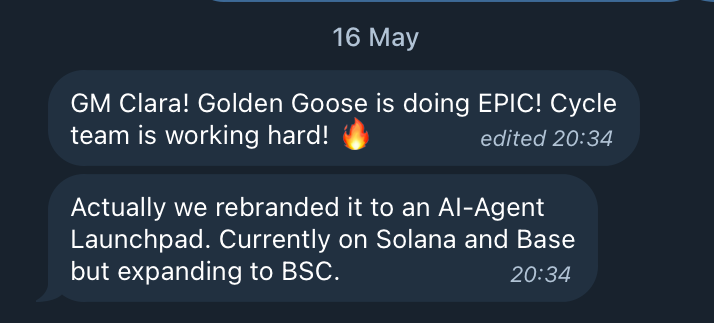
Perpetual Protocol price

Disclaimer
OKX does not provide investment or asset recommendations. You should carefully consider whether trading or holding digital assets is suitable for you in light of your financial condition. Please consult your legal/tax/investment professional for questions about your specific circumstances. For further details, please refer to our Terms of Use and Risk Warning. By using the third-party website ("TPW"), you accept that any use of the TPW will be subject to and governed by the terms of the TPW. Unless expressly stated in writing, OKX and its affiliates (“OKX”) are not in any way associated with the owner or operator of the TPW. You agree that OKX is not responsible or liable for any loss, damage and any other consequences arising from your use of the TPW. Please be aware that using a TPW may result in a loss or diminution of your assets. Product may not be available in all jurisdictions.
Perpetual Protocol market info
Market cap = Circulating supply × Last price

Perpetual Protocol Feed
PERP calculator


Perpetual Protocol price performance in USD
Popular Perpetual Protocol conversions
| 1 PERP to USD | $0.28990 |
| 1 PERP to EUR | €0.25692 |
| 1 PERP to PHP | ₱16.1350 |
| 1 PERP to IDR | Rp 4,739.25 |
| 1 PERP to GBP | £0.21606 |
| 1 PERP to CAD | $0.40261 |
| 1 PERP to AED | AED 1.0648 |
| 1 PERP to VND | ₫7,531.83 |
About Perpetual Protocol (PERP)
- Official website
- Block explorer
Perpetual Protocol FAQ
Perpetual Protocol ensures the stability and efficiency of its perpetual contracts through an innovative automated market maker (AMM) system. This system utilizes virtual balances and funding rates to keep the price of perpetual contracts in line with the underlying assets. By dynamically adjusting funding rates based on supply and demand, Perpetual Protocol reduces price discrepancies, ensuring fair and accurate pricing for perpetual contracts and providing users with a stable and efficient trading experience.
Yes, you can provide liquidity to Perpetual Protocol and receive rewards. Adding liquidity to the protocol's liquidity pools enhances the market's depth and liquidity. As a liquidity provider, you will earn a share of the trading fees generated by users of Perpetual Protocol. This incentive encourages users to participate in the liquidity provision, supporting the protocol's efficient operation and rewarding contributors.
Easily buy PERP tokens on the OKX cryptocurrency platform. Available trading pairs in the OKX spot trading terminal include PERP/USDT. You can also buy PERP with over 99 fiat currencies by selecting the "Express buy" option. Other popular crypto tokens, such as Bitcoin (BTC), Ethereum (ETH), Tether (USDT), and USD Coin (USDC), are also available.
Additionally, swap your existing cryptocurrencies, including XRP (XRP), Cardano (ADA), Solana (SOL), and Chainlink (LINK), for PERP with zero fees and no price slippage by using OKX Convert.
To view the estimated real-time conversion prices between fiat currencies, such as the USD, EUR, GBP, and others, into PERP, visit the OKX Crypto Converter Calculator. OKX's high-liquidity crypto exchange ensures the best prices for your crypto purchases.
OKX provides a highly secure and multi-chain OKX Web3 Wallet with all OKX accounts. It can safely store PERP or any other cryptocurrency for as long as needed. In addition, the OKX Web3 Wallet features bank-grade security and inbuilt access to hundreds of decentralized applications (DApps) and the OKX NFT Marketplace.
Monitor crypto prices on an exchange
ESG Disclosure
PERP calculator

















